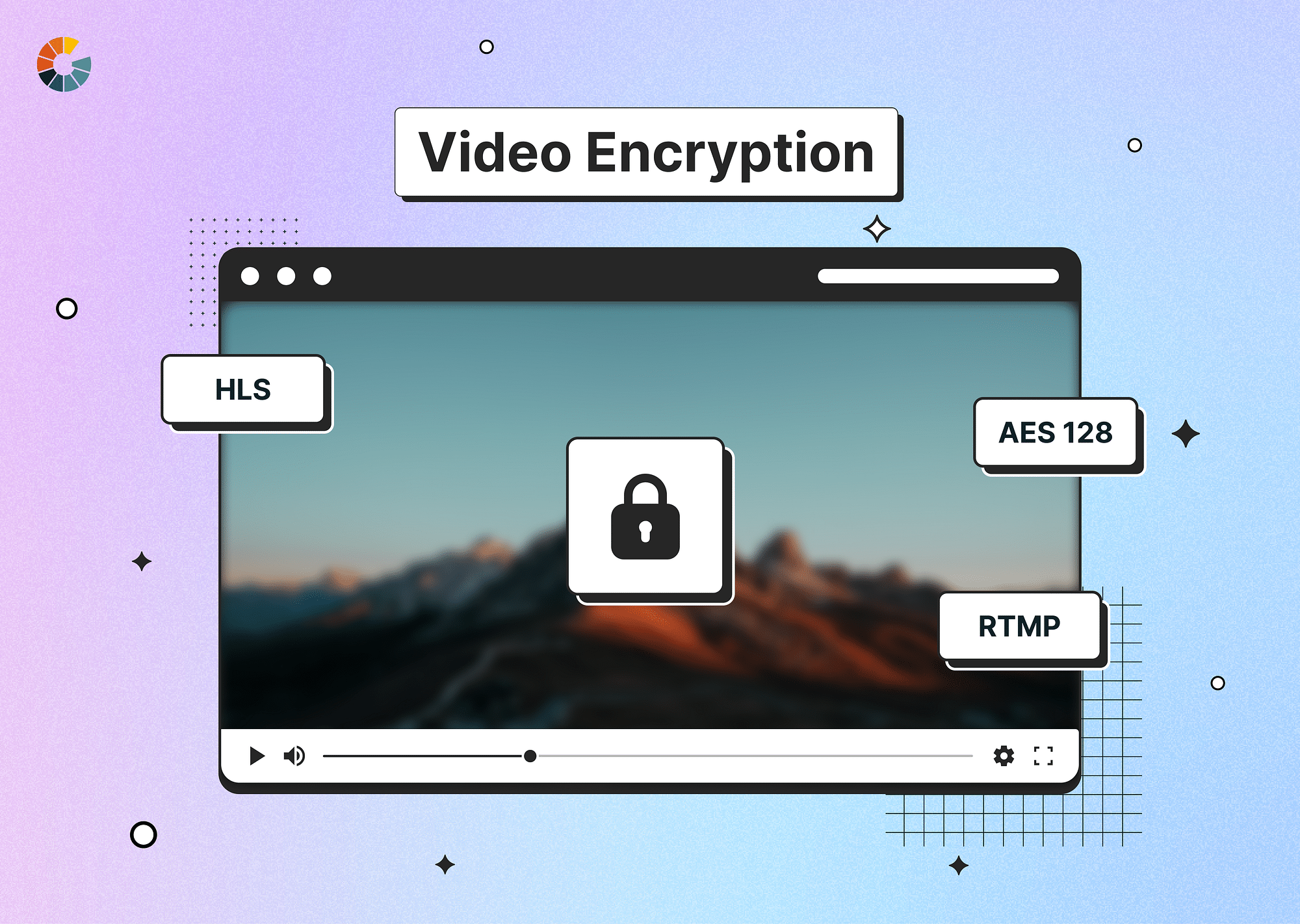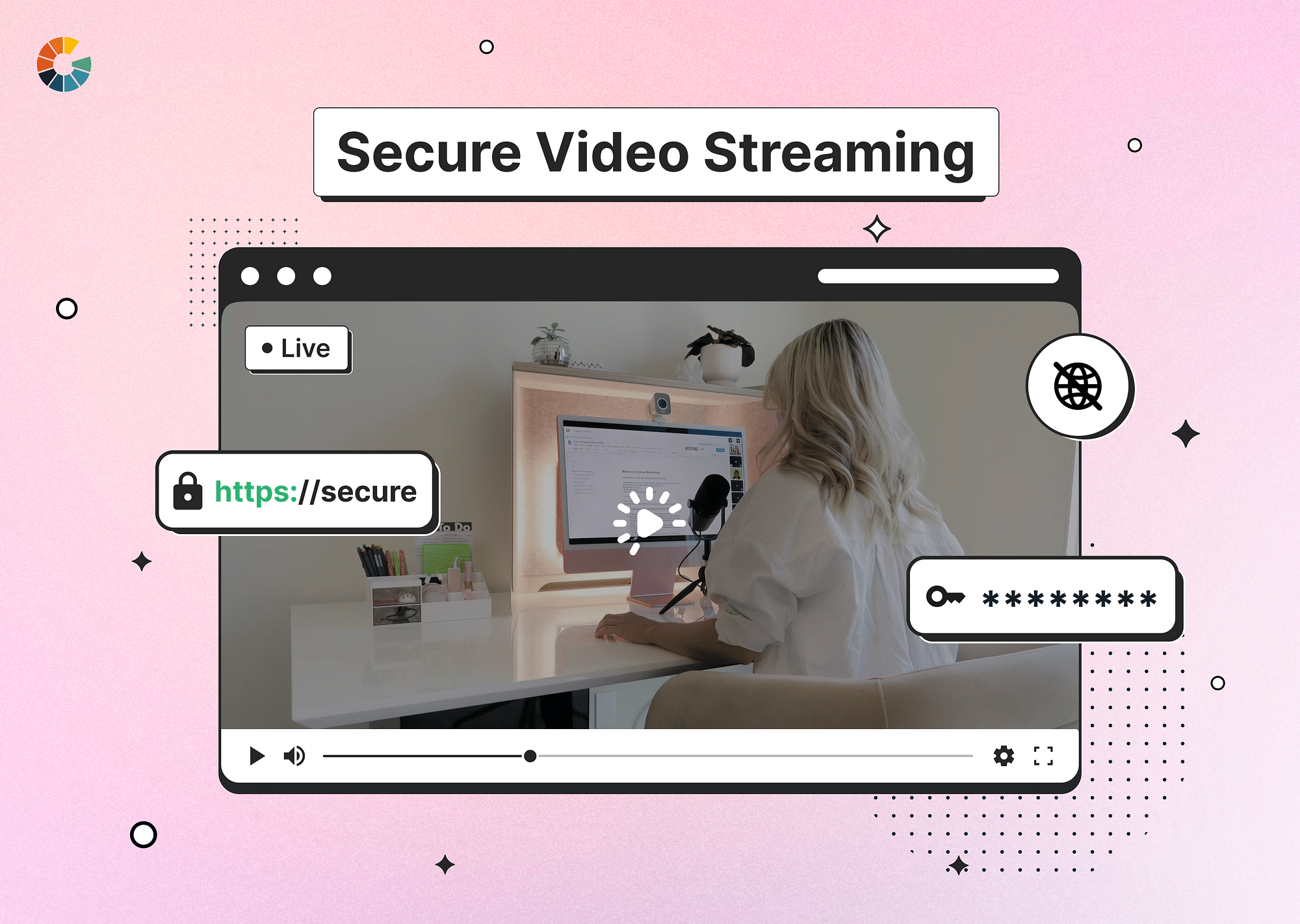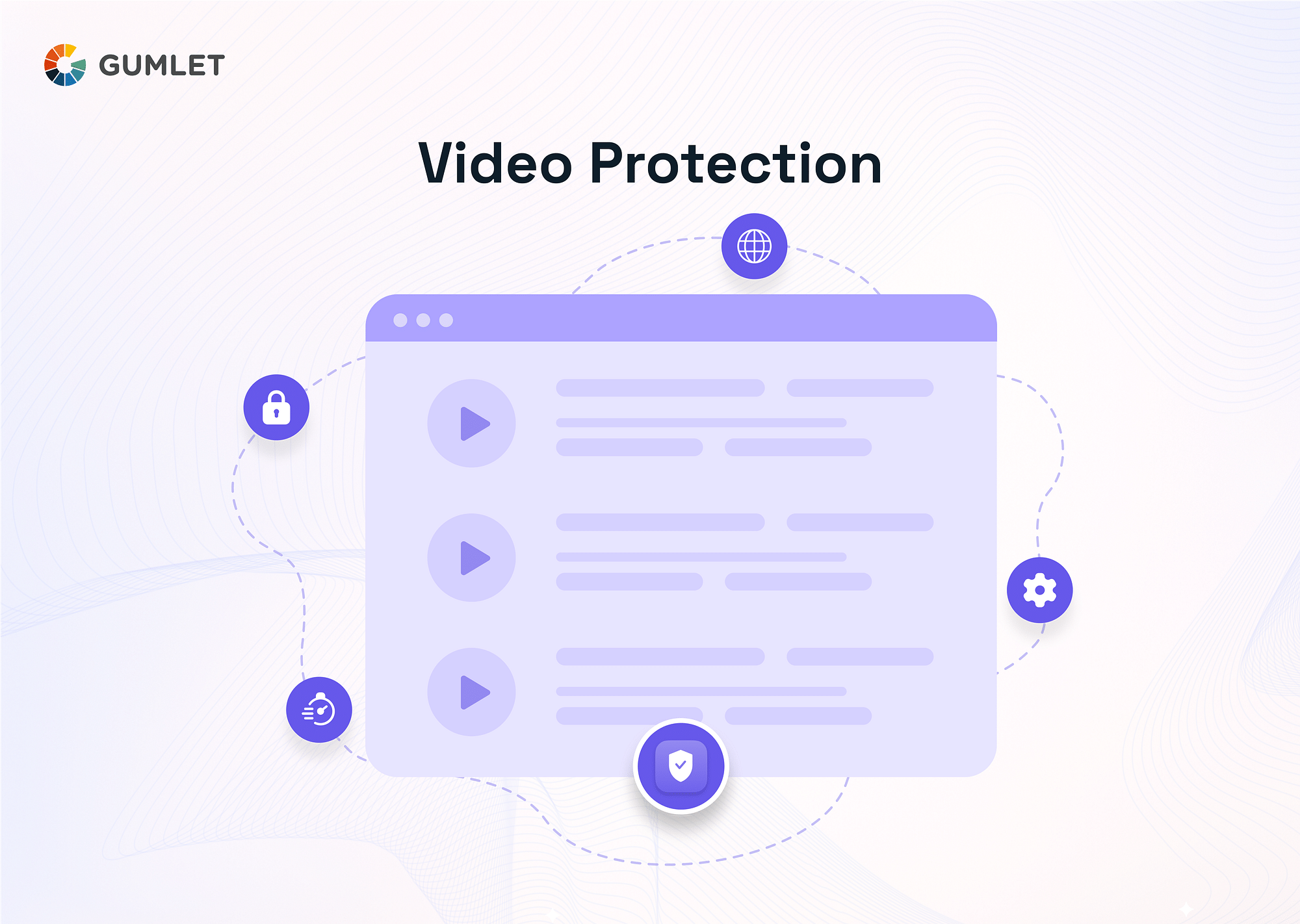In a world saturated with digital content consumption, from Netflix to Disney, the lucrative industry of creating and distributing digital media is omnipresent. However, where there's profit, there's also the risk of others profiting from someone else's work. This is where Digital Rights Management (DRM) solutions like Playready come in—a means for companies to protect their digital assets from potential theft and illegal distribution.
What is Playready DRM?
Microsoft's PlayReady serves as both a DRM solution and a platform dedicated to content protection and dissemination. Similar to Apple's FairPlay and Google's Widevine, it offers a secure client-side SDK for content decryption and rendering. PlayReady includes a license server that manages licenses and keys during distribution between clients and servers. It supports streaming formats like MPEG-DASH, HLS, and (MSS) and offers monetization models like Pay-per-view, Ad-based, Subscription, and Purchase/Rentals while implementing security measures against piracy.
How does Playready DRM work?
Here's how Microsoft's PlayReady DRM works:
- Step 1: Content typically undergoes a two-fold process – packaging and encryption. After encryption, it is sent to the Distribution Server, and the License Server receives the license and encryption keys. The domain information is also relayed to the Domain Server simultaneously.
- Step 2: When you press "Play," the player recognizes the encrypted content and informs the Content Decryption Module (CDM) through Encrypted Media Extensions (EME). Following that, the CDM generates a license request, which includes the KeyID and client info.
- Step 3: Using the KeyID, the License Server fetches keys from the Key Management System. These keys are then sent further, along with license details, to the client. The response includes the content-encryption key, license rights, and other required attributes.
- Step 4: Upon receiving the license info, the player forwards it to the CDM through EME, ensuring encrypted communication (meaning no other software or player can access and misuse it).
- Step 5: The CDM or hardware then extracts the content key from the license response, facilitating decryption, decoding, and rendering of the video. Microsoft PlayReady also offers a licensed store for the client, like the Hashed Data Store (HDS), to securely store keys and rights.
What are the levels of PlayReady DRM?
PlayReady DRM offers three Security Levels (SLs): SL150, SL2000, and SL3000.
- SL150, the basic level, is not suitable for production and works only where closed-door testing is involved. It lacks protection for assets, clients, and keys.
- SL2000 is suitable for production as well as commercial content. It also secures assets, clients, and keys, whether in software or hardware.
- SL3000, introduced in 2015 with PlayReady v3, is the most secure level—which employs hardware protection through the Trusted Execution Environment for assets, clients, and keys. SL3000 is typically used for safeguarding HD, UHD, and HDR content.
Benefits and Challenges with Playready DRM
Benefits
- PlayReady DRM supports a wide range of audio and video codecs, ensuring compatibility with various multimedia formats like WMA, WMV, AAC, AAC+, H.264, and more.
- It offers robust content protection measures to prevent unauthorized access and piracy of diverse digital content types such as music, video, images, etc.
- PlayReady DRM supports popular streaming formats like MPEG-DASH, HLS, and (MSS).
- PlayReady v4 supports CENC-based encryption, which enhances the security of digital content.
- PlayReady tightly integrates with various Microsoft platforms, providing a unified and cohesive experience for users on Windows and Mac.
- PlayReady supports a range of business models, including Subscription, Rental, and Ad-based models, among others.
- Its Over-The-Air (OTA) delivery simplifies the process of providing content and associated licenses.
- PlayReady incorporates multiple security levels and features to prevent piracy.
Challenges
- DRM licenses have the potential to be revoked by copyright holders, posing a risk of impeding access to legally obtained digital products.
- Implementing robust DRM solutions can be costly for both content providers and consumers.
- The emergence of digital-only games raises concerns about possible loss resulting from server shutdowns that govern DRM licenses, impacting the preservation of video games.
- DRM can limit users' fair use rights, preventing them from extracting legal and reasonable use of their intellectual property, such as creating backups or using content across various personal devices.
- Some DRM systems have been subject to exploitation, potentially exposing content to unauthorized access.
Should you consider Playready over other DRM Options?
Let us compare Playready DRM to other popular DRM solutions:
Playready vs Widevine: A comparison
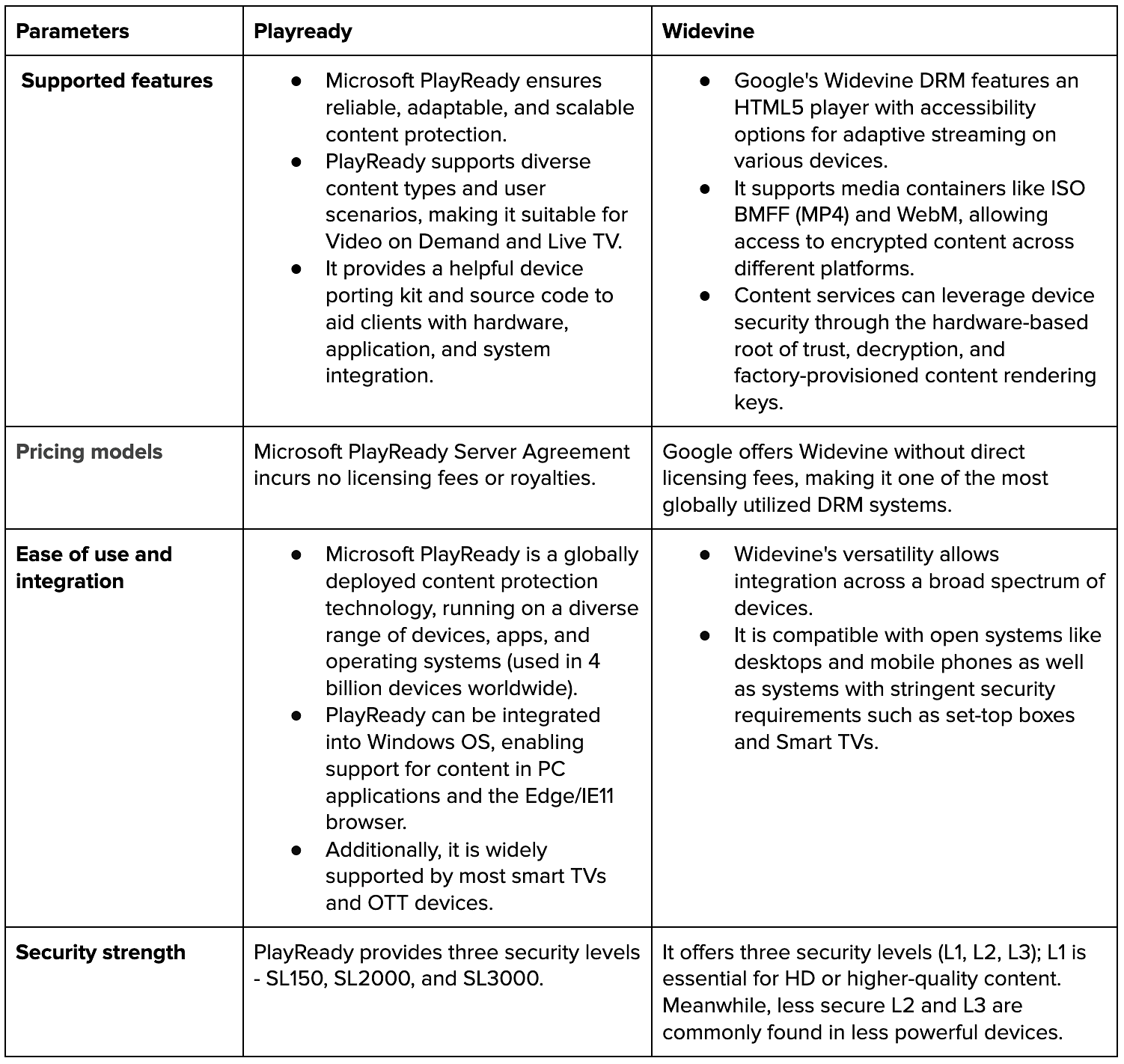
Playready vs Fairplay: A comparison
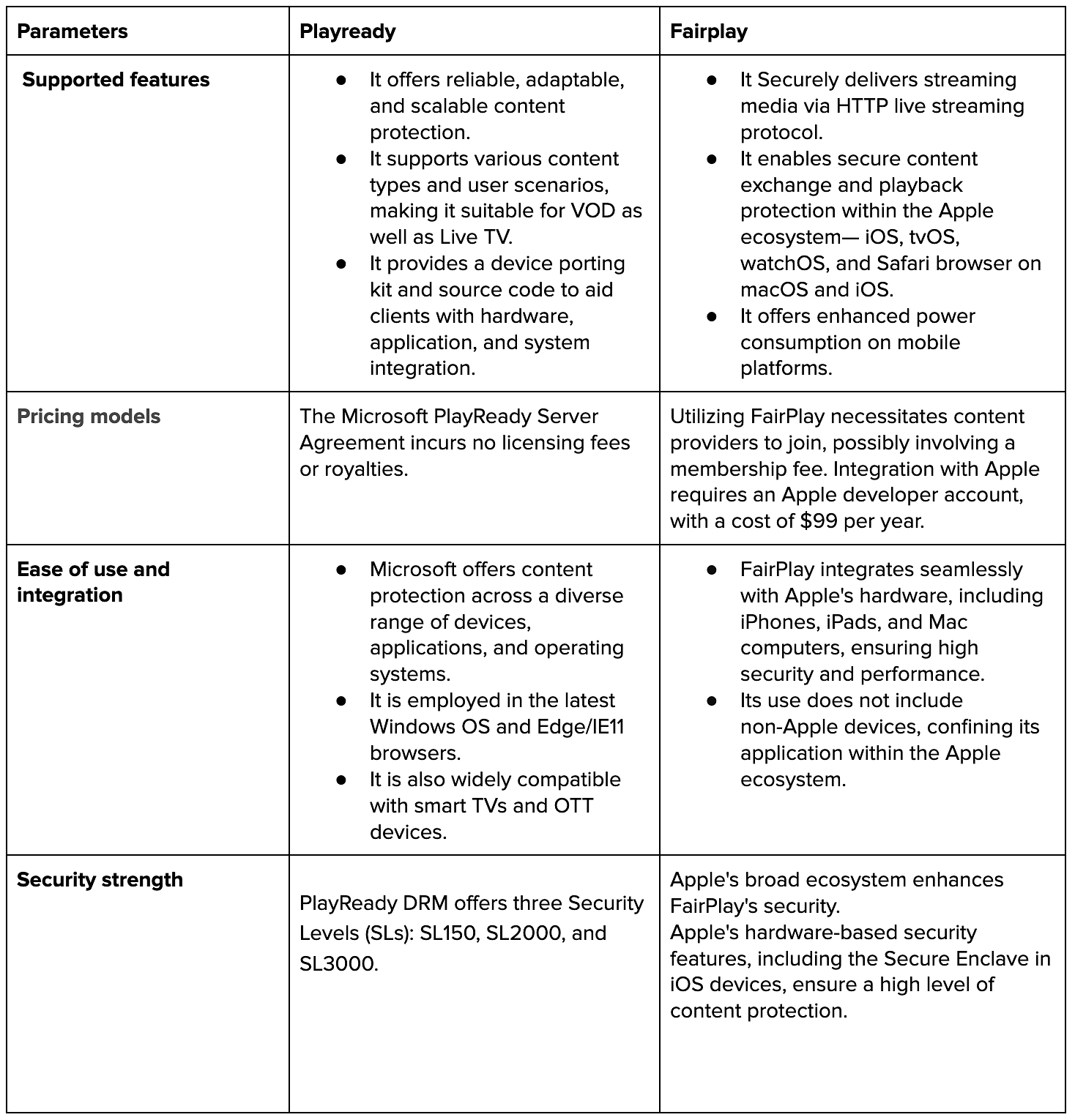
Playready DRM: Compatibility
Supported devices and platforms
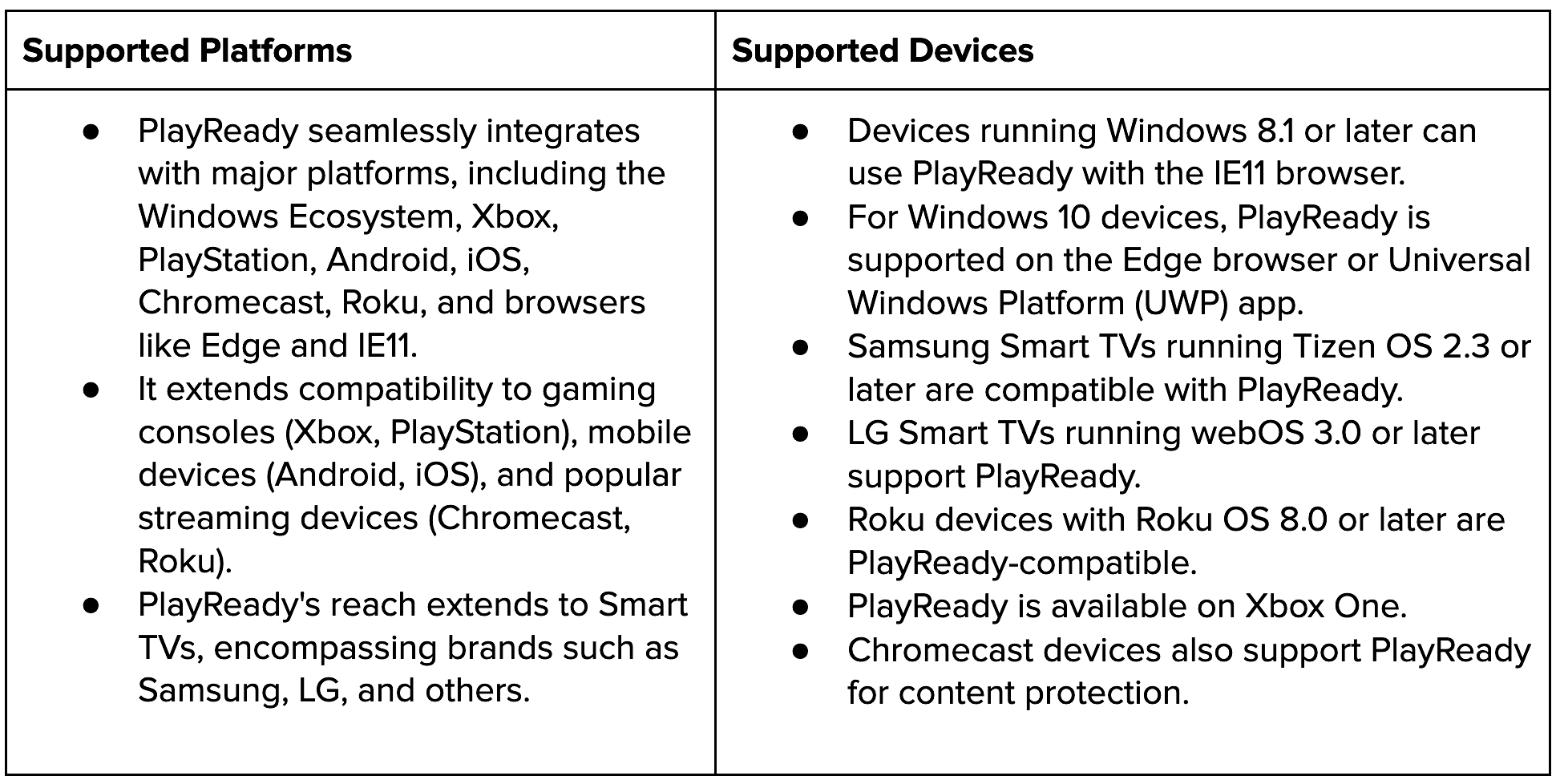
Integration with streaming services and content delivery networks
PlayReady seamlessly integrates with streaming services and content delivery networks:
- It supports various streaming formats, including MPEG-DASH, HLS, and CMAF.
- PlayReady is compatible with video formats like MPEG-TS and fMP4 containers.
- Video codecs supported by PlayReady include AVC (H.264) and HEVC (H.265).
- It also supports audio codecs such as AAC and AC3.
Conclusion
PlayReady stands out for its proven, versatile, and scalable features, with over 4 billion devices employing it for robust digital protection. It supports a wide array of audio and video codecs, ensuring compatibility with various systems like Windows Ecosystem, Xbox, PlayStation, Android, iOS, Chromecast, Roku, and browsers like Edge and IE11.
While PlayReady presents a comprehensive solution, the choice between PlayReady, Widevine, and FairPlay depends on specific requirements and ecosystems. PlayReady's strong compatibility with the Microsoft ecosystem makes it a preferred choice for users deeply embedded in that environment.
FAQs
Can Playready be integrated with other DRMs?
PlayReady is typically designed to work as a standalone DRM solution and may not support direct integration with other DRM systems. However, content service providers or other DRM solutions may leverage the PlayReady Server Software Development Kit (SDK) to build servers compatible with PlayReady and its associated ecosystem.
Can I uninstall PlayReady?
Yes, you can uninstall PlayReady from your Windows computer.
- Open the Control Panel and choose "Programs" or "Programs and Features."
- Find "PlayReady PC Runtime amd64" in the list of installed programs.
- Right-click on it and choose "Uninstall" or "Remove" to proceed with the uninstallation.
Is Microsoft PlayReady free?
Yes, the Microsoft PlayReady Server Agreement incurs no licensing fees or royalties. It provides a cost-effective option to implement robust content protection measures without financial constraints.
How do I get a PlayReady license?
The client, whether a device or software, has two approaches to acquiring a PlayReady license:
- Proactive Request: The client can initiate a license request from the PlayReady license service before starting content playback. This means it will anticipate the need for a license and request it ahead of time.
- Reactive Request: The client can wait until playback begins. If it discovers the need for a license during or after playback, it will react by requesting the license dynamically.


